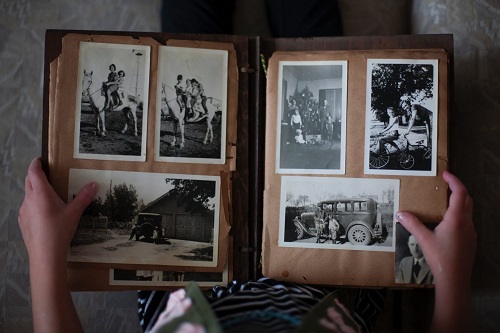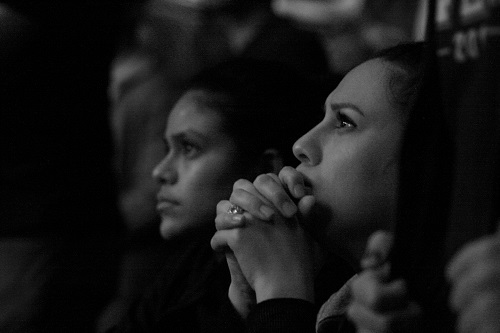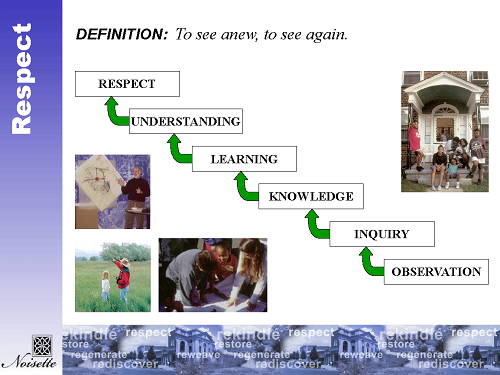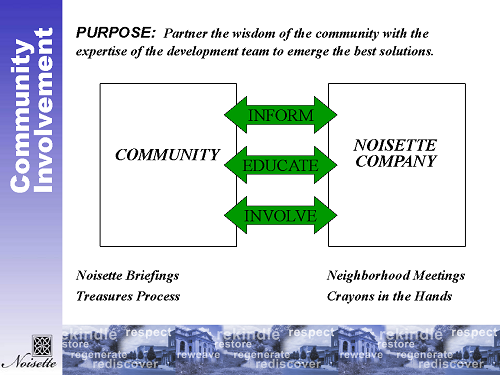As a regenerative community developer, we recognize that socially durable communities have two core elements that are essential to their long-term social, ecological and economic health:
Each member of the community understands the unique history and heritage of their social community and physical place over the course of time.
Each member of the community holds in common a vision for the future to which they help contribute over time.
Why is this so important? Real Estate and Development are professions that build and organize human habitats across multiple uses and scales to form communities. Almost every human community, universities, sororities and fraternities, service organizations, military and religious institutions as well as business organizations recognize that their history and heritage as well as core values and uniqueness are important for their members and employees to know as well as those they serve.
Storytelling is how all cultures pass on their wisdom since the dawn of human civilization. This works well when families and institutions are stable, so family and community gatherings are the vehicle to pass wisdom on. When you have a highly mobile population as well as one as ethnically and culturally diverse as the US, this process breaks down. Over the last 100 years the US has moved from a process of passing on core values and history by storytelling to no process at all.

@lauracathleen
Our transiency/relocation averages 3-5 years. In poverty communities it is 9-18 months. The result is that transient community members do not contribute to the community during the short time they are there. This is not surprising because, with no knowledge of the uniqueness and heritage of the community they enter, they have no reason to love it. If they have no reason to love the community where they live, they have no reason to invest, take pride in, or protect their community
The resulting dysfunction that we find in our cities, businesses and other organizations can be traced to the lack of this investment in or love of, the community. Understanding this, we at CityCraft commit significant time and resources to inventorying the historic, economic, ecological and cultural resources of a community over the course of time. This process informs our team and the community about the unique heritage of their community and its ecological, human settlement and cultural evolution,
This community involvement process is organized to recognize a common vision and institute an ongoing process to evolve and mature that vision over time.
The next question becomes what defines the community? The answer is a result of a second core CityCraft Principle: the systems that connect our people and buildings must be regenerative before our people and buildings can be regenerative. This requires that a geographic and circumstantial analysis of the social, ecological, economic, and human-built infrastructure systems be mapped at a cohesive systems scale, which is generally a watershed or subdistrict. No system can be improved at the single unit scale. This mapping also includes an archeological and ecological study of the evolution of this system’s scale area, so we and the community can understand the uniqueness of this place and culture back to pre-human settlement, if possible. The history and information revealed never ceases to amaze and surprise us. What is so powerful is the storytelling that begins and the oral history that starts to emerge from the wisdom keepers who are still with us.

@ericmok
This process is not conducted for a community, it is conducted with the community as the research team discovers the history of their place and, as we say, “defining the insanity of the current state.” The process to understand this must be based on respect and achieving trust with the community in the knowledge of place.
The graphic below was developed in 2001 to communicate to others how respect is built over time. Respect, when there are few facts and understanding is based on rumor or prejudice, is not possible. Our process of inquiry and discovery is a gradual process of seeing anew in which understanding grows and respect is earned over time evolving to a state of trust in and with each other.

The slide above defines the behavior of community members and technical professionals as they engage with the community. It gives the community a way to measure how we conduct ourselves as uninformed strangers in their neighborhood. This is a fundamental skill of the best community organizers as they are supposed to be catalysts, creating a reaction (in this case, building community capacity), and then disappearing. As in all catalytic events, the catalyst disappears. Continued dependency is failure for the community organizer.
The graphic below was created in 2001 as well, to show what the responsibilities of the Community and Development/Design Team were to each other. Their behavior is measured against the first graphic and process, in which this culture is lived, is measured by the second graphic.

One of the core responsibilities in our families’ building tradition is that we were responsible for the holistic health of not only all those we served directly and but also for the larger community impacted by our presence. So, if we were working at the scale on one floor of a building, we assumed responsibility for the entire building and its occupants. If we were working at the building scale, then we were also responsible for the block or neighborhood in which that building was located. If we were working at the block or neighborhood scale, then we were responsible for the logical next level of community we were impacting.
“A state of regeneration ensures that every decision consistently improves the long-term bioregional health and capacity of all social, natural, economic and existing human built systems.”* Page 162, Regenerative Urban Development, Climate Change and the Common Good – August 2019
It is not possible to achieve a state of regeneration without knowledge of place over time. It is impossible to grow regenerative capacity long term without this process of community engagement and achieving social durability. The capacity for the community to make this regenerative future their own and improve will not be present. Each of these is also essential for the community’s capacity to design and implement a long term regenerative governance system.
|
ABOUT THE AUTHOR
John L. Knott, Jr. is an internationally recognized leader in the regeneration of urban real estate, infrastructure, energy and environmental systems. He is the creator of the CityCraft process, which is a development and city planning process that restores the economic, environmental and social health of cities. Mr. Knott is a recognized thought leader and keynote speaker on sustainable development, the green economy and restoration of cities.
|